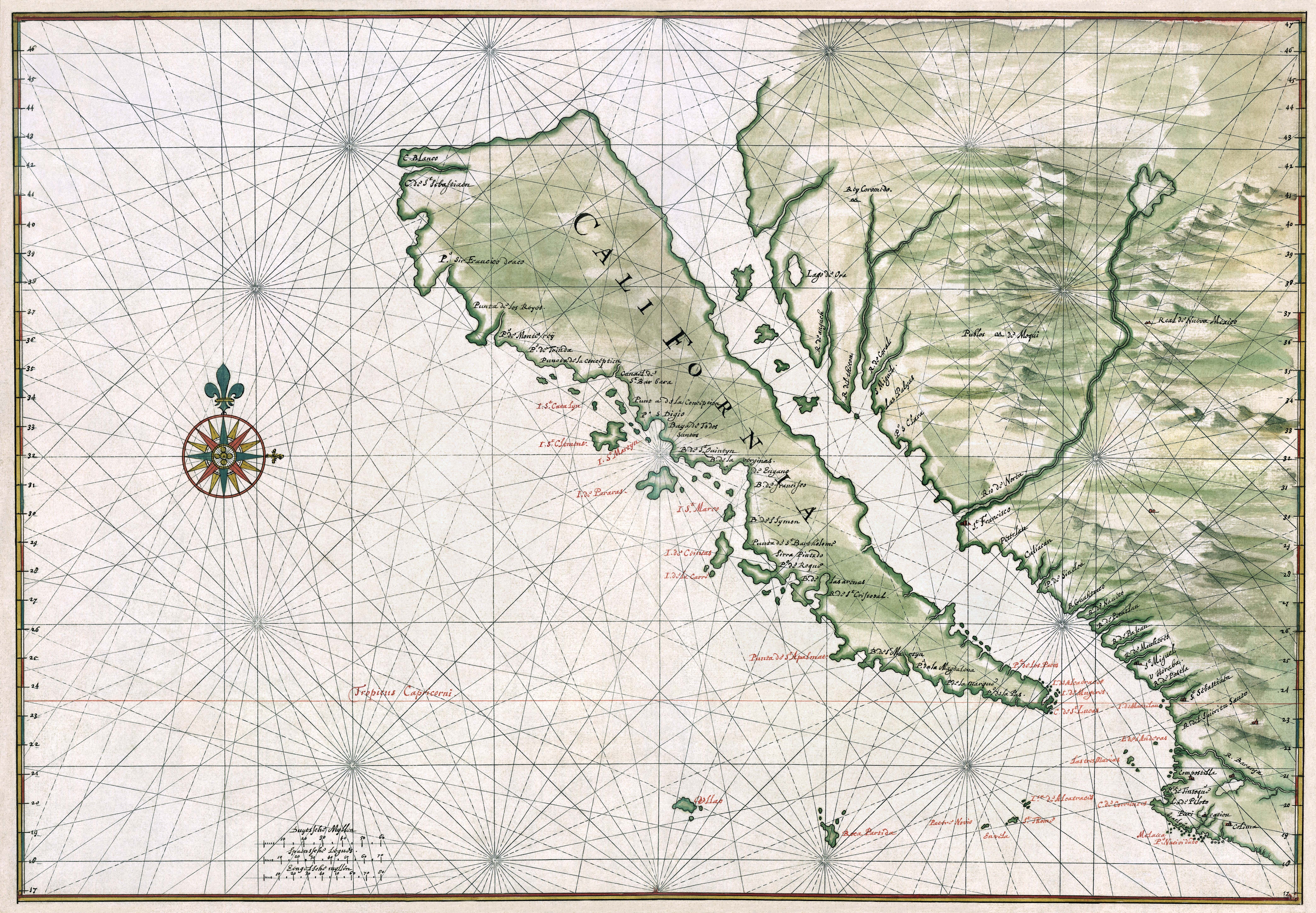A few years ago, my family moved to Monterey. As we became acquainted with our new home and explored its many historical monuments, I was surprised to discover that this small town with a famous aquarium was also the original capital of California (at the time, Alta California) when the region was under Spanish colonial rule. I filed it away in the part of my brain labeled “things I really should have learned in school” and moved on with my life. Eventually, however, I became curious about what else I didn’t learn in school and what began as a simple exploration of curiosity transformed, once again, into a full-fledged research project.
I remember learning in school that there was a Spanish goddess named Califia for whom California was named but suddenly that explanation seemed nonsensical. The Spanish who colonized the Americas were Roman Catholic, many of them fanatic zealots. Why would they name a region after a pagan goddess? After some searching I discovered that there is no goddess, Spanish or otherwise, named Califia. There is, however, a fictional character with that name in a fantasy novel written around 1500 CE and her story is, to put it politely, banana-pants.
The original tale is found within a larger story, “The Adventures of Esplandian“. In this avante-garde fantasy novel, Esplandian and a band of adventurers seize Constantinople from the Ottomans, who immediately begin building a coalition army to take it back. One of their emissaries lands on a vast pacific island populated by black Amazons, gigantic beasts, and their pet griffins. The queen of the island is named Califia, a word likely borrowed from the Arabic Calif and then given a feminine Spanish ending. This island, being the place where Califia lives, is called California.
Now, you’re probably asking yourself, How did a fictional place in a fantasy novel inspire people to name an actual place? Apparently, this book had one particularly high profile fan: Hernan Cortez. Apart from being a thief, genocide engineer, and murderer, Cortez was quite the avid reader of tawdry chivalric fantasy and when a group of his scouts returned from an expedition across modern-day western Mexico, they told him something remarkable: they spotted a large island off the west coast of America. Cortez, no doubt giddy with fanboy excitement, quickly named the alleged island California, just like in his favorite book.
Cartographers would eventually realize that California was actually a peninsula that connected to the mainland, but this took longer than you might think. They were still creating maps portraying California as an island up through the mid-1600’s.

The Adventures of Esplandian faded into the dust of history, leaving relatively few manuscripts and no popular demand for its reprinting. This is usually the part where I might bemoan the tragedy of such an influential work falling into the cracks of disinterested modernity, but I’m actually quite glad that it’s out of circulation. The bits I’ve read are filled with overworked prose and its author’s intolerant Roman Catholic supremacist attitude bleeds into every facet of the story’s pro-colonizing narrative. A common refrain among reactionaries is to whine about great works of the past that “could never be made today.” Regarding The Adventures of Esplandian, I think even the crankiest bigot would utter that phrase with a sigh of relief.
My goal is not to merely reproduce the book that emerged five hundred years ago, but to explore the mythology of California by focusing the story on its women. I plan to preserve the essential elements – only women are allowed on the island, the Californians themselves are black, they have griffins – while providing myself plenty of latitude to fill in the blanks where needed. I want to create a work of historical fantasy that preserves the compelling elements of the original story while also crafting a challenging anti-colonial narrative that will make the work relevant to modern readers.
While this book will fit snugly into that vast genre of Fantasy stories, my intention is that it will be a true work of historical fantasy. The leaders featured within its pages will be inspired by the real people who would have been leading these various French, Russian, Arab, Turkish, and Baltic peoples (among others!). The nephew of a certain infamous Wallachian warlord known for his bloodthirsty inclinations might even make an appearance.
As of the time of this writing, I’ve finished the rough draft. The principle character is called Califia, though that is not her birth name. Califia is her title, which means queen. This is an elected office in California, whose resident amazons live within a sort of anarcho-syndicalist system. The protagonist is also the daughter of a former queen, which some view as a creeping dynastic threat to their way of life. A visitor arrives amid this tense environment offering Califia a chance to silence her critics by seeking revenge against the ancient enemy who drove their foremothers out of their original homeland thousands of years before.
With some hard work and a little luck, I think the work might just be ready for beta readers by January 2021. Subscribe to my mailing list for updates and for a chance to become a beta reader when the time comes!

